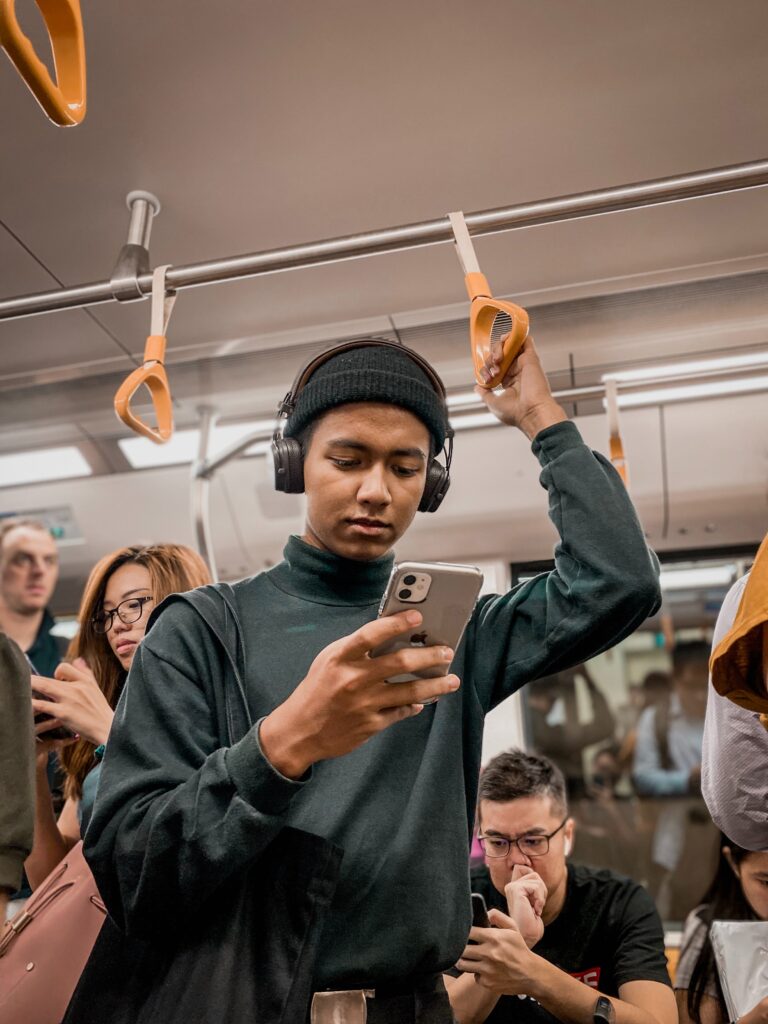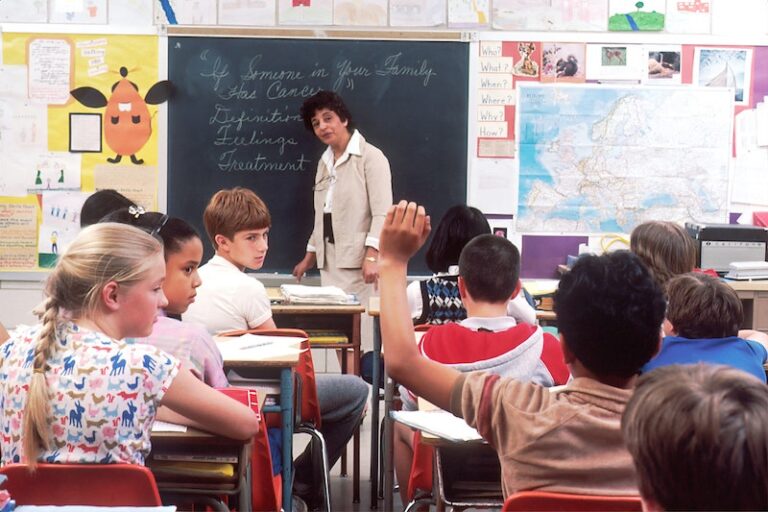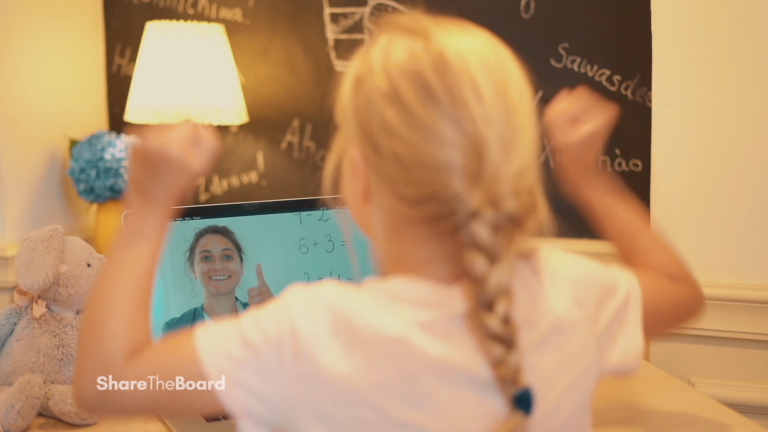How do we keep virtual learning human-centric?

Remote, virtual, distance learning… call it what you will, millions of us choose – or have to choose – to learn from someone physically separate from us. But as all of our interactions become increasingly rooted in remote digital experiences, what are we actually losing besides the proximity of other people? What are the risks of this loss and are they avoidable?
Learning vs. teaching
First things first: it may seem obvious but it’s important to make a distinction between learning and teaching. While the former is the process of acquiring new knowledge or understanding and may even be considered a state of mind, teaching reflects a very specific activity. This activity presupposes at least two participants – a teacher and a student – and reflects a deliberate aim to transfer knowledge, stimulate thought, or encourage understanding. In other words, it is an active and inherently human-centric engagement.

One might argue that in life there are many types of teachers. Beyond those folks at the front of the class or one’s parents or friends, there are non-human actors such as books or apps. Add to that intangible sources such as experience or reflection and you might say that teachers are all around us. However, the ability to glean insights from non-human actors is entirely up to the beholder. These are not teachers, though they may certainly offer opportunities to learn. The key distinction, again, is the deliberate transferrance from one mind to another. Said differently: you need a teacher to teach.
What else do you need? And does the answer change when the teacher is not physically close to the student?
Living, working, and teaching in the Remote Age
Digitization is another step in the evolution of technology that accompanies human history. It’s characterized by the replacement of traditional tools, processes, or content with digital facsimiles – digital copies meant to be the closest possible representation of the original. The rise of the internet in the digital age has given birth to a new era: the Remote Age.

This age is characterized by a greater number of interactions across physical distances far exceeding the limits of human physical ability. It’s not difficult to see these changes in action: many of us communicate over email, text, or video conferencing; collaborating with colleagues from around the world is commonplace; indeed, the image of strangers in close proximity choosing instead to interact with remote contacts while hunched over their phones is arguably one of the civilizational self-portraits of our time.
We see these trends in work too, of course. Anyone engaged in white-collar work spends a substantial part of their day interacting with people who are not in their immediate physical vicinity. In fact, an increasing portion of this workforce is choosing to separate itself further – working outside of the office for part or even all of the workweek.
Yet while we’ve allowed our personal interactions, our interests, and our work to change so substantially, why are we resistant when it comes to schools? Why doesn’t the percentage of students learning remotely keep pace with the corresponding trend in the workplace?
The necessity of remote learning
The answer to the above question lies in the inherent human-centricity of the teaching process. Again, by definition, teaching involves an active transferrance between at least two people. And whether we’re consciously aware of it or not, that transferrance is more effective when those people are close to each other.

Ask any teacher about the importance of body language or of eye contact – both as an inherent part of their craft and as a feedback loop from their pupils. You’ll invariably receive the same response: it’s fundamental to successfully sharing knowledge or stimulating thought. It’s fundamental to teaching. Add to this the well-known social aspects of learning in a group and the significance of human proximity becomes even clearer.
Why would anyone want to disrupt something so fundamental? Why would someone deliberately choose to put distance between themselves and their educator? The answer almost always revolves around some form of necessity. In some cases, it may be that similar learning opportunities are not afforded locally, or within one’s economic reach. Sometimes there are specific obstacles keeping us from attending school in person – both locally (e.g., water issues) or globally (e.g., pandemic). Very rarely do we choose distance learning on a whim or because we think the distance itself is actually a benefit.
That’s not to say that virtual learning doesn’t have its plusses. For one, as in the above examples, it can mean the difference between having access to education or not. In some cases the remote option fits well with lifestyles or schedules. However, barring cases of necessity, the plusses usually pertain to older pupils or even adult learners – as they can play a more active role in the learning process. All things being equal, most of us would prefer our teachers to be in close proximity, especially with younger students.
So if remote learning is chosen out of necessity or strong personal preference, what’s the big deal about human-centricity? Is it still important?
The impact of dehumanization in education
Unfortunately, we have plenty of information to answer this question. During the COVID19 pandemic and in the resulting lockdowns, much of the world unwittingly participated in history’s largest study concerning the dehumanization of education. The results were clear: removing human-centricity from an inherently human-to-human interaction undermines its effectiveness and, indeed, introduces new risks.

During the pandemic, many schools switched abruptly to remote learning, replacing a human-rich experience with a predominantly digital one. Students, separated from peers and teachers, were relegated to looking at files and applications on screens. Small talking heads beside those files were often the only remnant of humanity left in the learning experience.
Though some students thrived in the new environment, the broader negative results were well documented and visible at every level of education. Many students experienced mental health and social issues. Those suffering before the pandemic started, experienced further deterioration of their conditions. And learning loss was observed across the board, with certain minority groups being more affected than others. (more info, more, more, more, more…)
Many studies have been done to understand the reasons behind these effects but the documented observations point squarely to at least a contributing role of excessive digitization – and, even more so, remote digitization. We observe, that abundant use of these facsimiles in a learning environment:
- Leads to an increase in our Cognitive Load, which may actually impede our learning. We become more focused on the method rather than the message.
- Contributes to our social separation and the dehumanizing of our communications
- Inhibits the integration and development of motor and perceptual skills in children
- Lowers the level of overall engagement between the instructor and students
- Reduces the retention of the material being taught
Non-negotiable human-centricity in remote education
Because distance learning is often a result of necessity, it’s arguably even more important to fight for every inch of human-centricity possible. Though ShareTheBoard was originally conceived as a collaboration tool, when the pandemic started, we began being contacted by educators across the world. They were drawn to our tech not because of a new form of interaction but because it allowed them to keep a taste of the in-person experience.

During a demo in the early days with the CUNY College of Staten Island, one of the participating professors exclaimed “this is just like in class!” That statement has stayed with us. We then understood one of the critical challenges that we were actually solving. Since then, delivering the most “like-in-class” remote learning experience has been nothing short of a mantra.
What makes the experience so familiar? For one, the sight of a teacher standing in front of a board is like seeing a creature in its natural habitat. The board itself is a teaching power-tool with well-documented pedagogical and psychological benefits. Even the “standing” part of that sentence is important, as Teresa Danze of the University of Dallas demonstrates in her review of our app: “Standing improves my energy, confidence, and attitude; it is an accepted and well-known means of delivering an education. It’s familiar.” Add to that the ability for students to read their teacher’s body language and, in turn, to make their own level of engagement known non-verbally, and you’ve got something, indeed.
Priorities and next steps
Our team is engineering heavy. We take great pride in solving the complex problem of handwriting detection in vastly varying environments (lighting, distance, cameras, surfaces, etc.). Yet it’s a humbling reminder that the benefit of all that technological wizardry is often something profoundly non-technical. For all the classification, digitization, and vectorization, it’s often the gesticulation that matters most.
Are you an educator or, perhaps, a student? How did you fare during the pandemic? What was most difficult for you when it came to the sudden shift to digital-first learning? If you engage in remote education now, how do you keep the human touch?
We believe strongly that human-centricity is one – if not the most critical – pillar of successful remote teaching. Though we will continue to innovate and provide new ways for time-tested devices to remain essential tools in digital and remote contexts, may we never lose sight of a vastly more important tool – our eyes.
ShareTheBoard
Don't want to miss a post? Follow us on LinkedIn or Twitter - see links in the site footer.